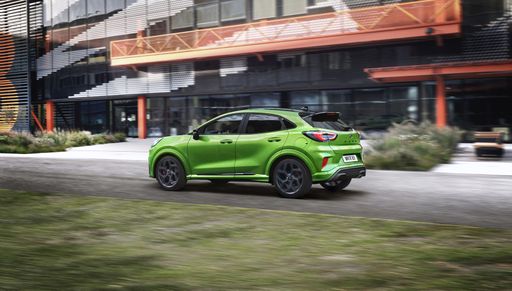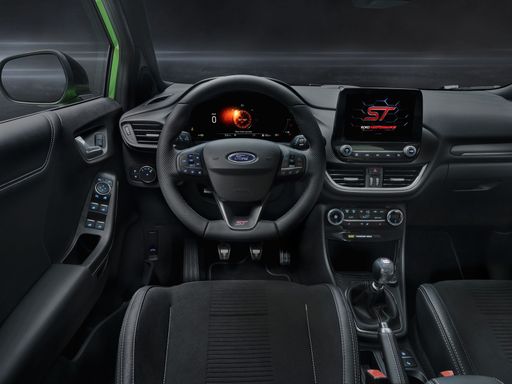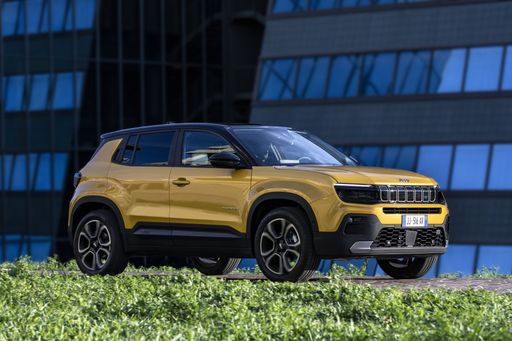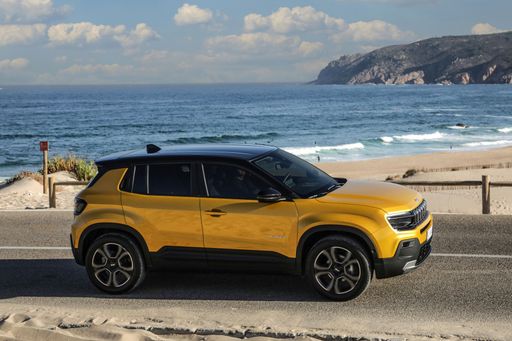Ford Puma vs Jeep Avenger – Differences & prices compared
Two cars, one duel: Ford Puma meets Jeep Avenger.
Which one wins in performance, efficiency and value for money? Find out now!
Costs and Efficiency:
Looking at overall running costs, both models reveal some interesting differences in everyday economy.
Jeep Avenger has a a bit advantage in terms of price – it starts at 21900 £, while the Ford Puma costs 24800 £. That’s a price difference of around 2829 £.
Fuel consumption also shows a difference: Jeep Avenger manages with 4.90 L and is therefore to a small extent more efficient than the Ford Puma with 5.40 L. The difference is about 0.50 L per 100 km.
In terms of energy consumption, the advantage goes to the Ford Puma: with 13.10 kWh per 100 km, it’s to a small extent more efficient than the Jeep Avenger with 15.50 kWh. That’s a difference of about 2.40 kWh.
As for range, the Jeep Avenger performs slight better – achieving up to 400 km, about 24 km more than the Ford Puma.
Engine and Performance:
Under the bonnet, it becomes clear which model is tuned for sportiness and which one takes the lead when you hit the accelerator.
When it comes to engine power, the Ford Puma has a slight edge – offering 168 HP compared to 156 HP. That’s roughly 12 HP more horsepower.
In acceleration from 0 to 100 km/h, the Ford Puma is clearly perceptible quicker – completing the sprint in 7.40 s, while the Jeep Avenger takes 9 s. That’s about 1.60 s faster.
In terms of top speed, the Ford Puma performs slight better – reaching 210 km/h, while the Jeep Avenger tops out at 194 km/h. The difference is around 16 km/h.
There’s also a difference in torque: Ford Puma pulls slightly stronger with 290 Nm compared to 260 Nm. That’s about 30 Nm difference.
Space and Everyday Use:
Whether family car or daily driver – which one offers more room, flexibility and comfort?
Both vehicles offer seating for 5 people.
In curb weight, Jeep Avenger is slightly lighter – 1180 kg compared to 1316 kg. The difference is around 136 kg.
In terms of boot space, the Ford Puma offers evident more room – 523 L compared to 380 L. That’s a difference of about 143 L.
In maximum load capacity, the Ford Puma performs slight better – up to 1283 L, which is about 6 L more than the Jeep Avenger.
When it comes to payload, Jeep Avenger barely noticeable takes the win – 502 kg compared to 469 kg. That’s a difference of about 33 kg.
Who comes out on top?
Overall, the Ford Puma shows itself to be only a minor advantage and secures the title of DriveDuel Champion.
It convinces with the more balanced overall package and proves to be the more versatile choice for everyday use.
 @ Ford Motor Company / Ford Media Center
@ Ford Motor Company / Ford Media Center
Ford Puma
Ford Puma
The Ford Puma is a cheeky compact crossover that blends sporty styling with city-friendly practicality, giving drivers a surprisingly fun and composed ride. With clever storage tricks and a lively personality, it’s a smart pick for buyers who want enjoyment without fuss.
details @ Ford Motor Company / Ford Media Center
@ Ford Motor Company / Ford Media Center
 @ Ford Motor Company / Ford Media Center
@ Ford Motor Company / Ford Media Center
 @ Ford Motor Company / Ford Media Center
@ Ford Motor Company / Ford Media Center
 @ Ford Motor Company / Ford Media Center
@ Ford Motor Company / Ford Media Center
Jeep Avenger
The Jeep Avenger shrinks Jeep's boxy, adventurous styling into a city-friendly electric crossover that looks just as at home on tight streets as it does on muddy weekend lanes. It's a savvy pick for drivers who want go-anywhere attitude without the truck-size ego — practical inside, lively around town and ready to tackle a bit of rough stuff when the mood strikes.
details @ Jeep / Stellantis Media
@ Jeep / Stellantis Media
 @ Jeep / Stellantis Media
@ Jeep / Stellantis Media
 @ Jeep / Stellantis Media
@ Jeep / Stellantis Media
 @ Jeep / Stellantis Media
@ Jeep / Stellantis Media
 @ Jeep / Stellantis Media
@ Jeep / Stellantis Media
 @ Ford Motor Company / Ford Media Center
@ Ford Motor Company / Ford Media Center
|
 @ Jeep / Stellantis Media
@ Jeep / Stellantis Media
|
|
|
|
Costs and Consumption |
|
|---|---|
|
Price
24800 - 36300 £
|
Price
21900 - 36900 £
|
|
Consumption L/100km
5.4 - 5.9 L
|
Consumption L/100km
4.9 - 5.7 L
|
|
Consumption kWh/100km
13.1 - 13.9 kWh
|
Consumption kWh/100km
15.50 kWh
|
|
Electric Range
361 - 376 km
|
Electric Range
400 km
|
|
Battery Capacity
43 kWh
|
Battery Capacity
51 kWh
|
|
co2
0 - 135 g/km
|
co2
0 - 129 g/km
|
|
Fuel tank capacity
42 L
|
Fuel tank capacity
44 L
|
Dimensions and Body |
|
|---|---|
|
Body Type
SUV
|
Body Type
SUV
|
|
Seats
5
|
Seats
5
|
|
Doors
5
|
Doors
5
|
|
Curb weight
1316 - 1563 kg
|
Curb weight
1180 - 1520 kg
|
|
Trunk capacity
456 - 523 L
|
Trunk capacity
325 - 380 L
|
|
Length
4186 - 4226 mm
|
Length
4084 - 4088 mm
|
|
Width
1805 mm
|
Width
1776 mm
|
|
Height
1550 - 1555 mm
|
Height
1527 - 1541 mm
|
|
Max trunk capacity
1216 - 1283 L
|
Max trunk capacity
1218 - 1277 L
|
|
Payload
367 - 469 kg
|
Payload
494 - 502 kg
|
Engine and Performance |
|
|---|---|
|
Engine Type
Electric, Petrol MHEV
|
Engine Type
Electric, Petrol, Petrol MHEV
|
|
Transmission
Automatic, Manuel
|
Transmission
Automatic, Manuel
|
|
Transmission Detail
Reduction Gearbox, Manual Gearbox, Dual-Clutch Automatic
|
Transmission Detail
Reduction Gearbox, Manual Gearbox, Dual-Clutch Automatic
|
|
Drive Type
Front-Wheel Drive
|
Drive Type
Front-Wheel Drive, All-Wheel Drive
|
|
Power HP
125 - 168 HP
|
Power HP
100 - 156 HP
|
|
Acceleration 0-100km/h
7.4 - 9.8 s
|
Acceleration 0-100km/h
9 - 10.6 s
|
|
Max Speed
160 - 210 km/h
|
Max Speed
150 - 194 km/h
|
|
Torque
170 - 290 Nm
|
Torque
205 - 260 Nm
|
|
Number of Cylinders
3
|
Number of Cylinders
3
|
|
Power kW
92 - 124 kW
|
Power kW
74 - 115 kW
|
|
Engine capacity
999 cm3
|
Engine capacity
1199 cm3
|
General |
|
|---|---|
|
Model Year
2025
|
Model Year
2023 - 2025
|
|
CO2 Efficiency Class
A, D
|
CO2 Efficiency Class
A, D, C
|
|
Brand
Ford
|
Brand
Jeep
|
Is the Ford Puma offered with different drivetrains?
The Ford Puma is offered with Front-Wheel Drive.
The prices and data displayed are estimates based on German list prices and may vary by country. This information is not legally binding.
